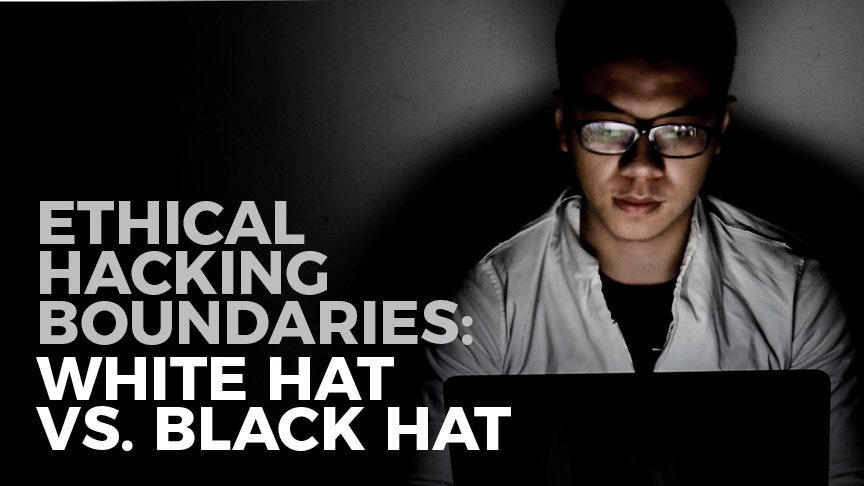Ethical Hacking Boundaries:
White Hat vs. Black Hat
Ethical hacking is a hot topic in the cyber community and has created a viable and in-demand career path for tens of thousands of practitioners. If you’re already well-versed in the space, stay tuned for our future posts as we dive into the world of ethical hacking. If you’re new to the concept and industry, let us set the scene by examing where the line is drawn between good and evil in cybersecurity.
It wasn’t long ago that our perception of hackers was based on scenes from popular TV shows and movies. Whether characters were waging altruistic attacks against large corporations or thwarting government enemies, what we didn’t see was the impact of those attacks on the public.
Then came breaches like Equifax, the U.S. Office of Personnel Management (OPM), and Yahoo that reframed our view of hackers and their motivations with more than 3 billion compromised accounts. With breaches becoming a regular occurrence it’s predicted that by 2020 1 in 4 people worldwide will be affected by a data breach.
Our image of hackers has evolved from individuals sitting in dark basements nefariously tapping away at their keyboards to innocuous office employees. Today, threat actors are often organized groups of cyber professionals seeking to exploit a company’s system for personal gain.
The Anatomy of an Ethical Hacker
Luckily, there’s a growing interest in establishing a cohort of ethical hackers, that can get ahead of cyber crime by applying the same skills to exploit known vulnerabilities, and find new ones in an effort to identify and provide countermeasures before an exploit occurs.
The term “hacker” often carries a negative connotation and confuses the differences in their intentions. For this reason, ethical hackers are often referred to as “white hat” hackers and malicious hackers as “black hat” hackers. But the monikers are only the beginning of what separates the two.
 Some claim that white hat hackers are merely black hats who have crossed over from the dark side in that kind of Return of the Jedi way. When looking for weaknesses in an organization’s network, physical security, or overarching security policies, an ethical hacker deploys many of the same techniques – Denial of Service (DoS) attacks, social engineering, security scans, and many other tactics in an attempt to be one step ahead of someone looking to carry out a malicious attack. For this reason, companies rely on a white hat’s expertise to help protect their organizations’ most valuable assets, digital or otherwise.
Some claim that white hat hackers are merely black hats who have crossed over from the dark side in that kind of Return of the Jedi way. When looking for weaknesses in an organization’s network, physical security, or overarching security policies, an ethical hacker deploys many of the same techniques – Denial of Service (DoS) attacks, social engineering, security scans, and many other tactics in an attempt to be one step ahead of someone looking to carry out a malicious attack. For this reason, companies rely on a white hat’s expertise to help protect their organizations’ most valuable assets, digital or otherwise.
Doing Well By Doing Good
Because unethical hackers will always be lurking around the corner, the need for ethical hacker-minded IT professionals continues to spike. To keep up, companies are making an investment in their cybersecurity preparedness; however, the demand for qualified professionals is outpacing the available talent, creating an opportunity for security professionals to break into this growing space.
One way to do this is by becoming a Certified Ethical Hacker. Not only will this certification move your resume to the top of the stack, it is a common requirement for in-demand roles like Penetration Testers and many government agencies such as the Department of Defense. Pursuing your CEH certification will help you master concepts like Intelligence gathering, scanning networks, and enumerating systems. Technology will continue to make seismic leaps and information theft will become even more common. Let’s talk about how you can join the tactical, smart, and proactive group of ethical hackers who are combating cyber-crime today.

